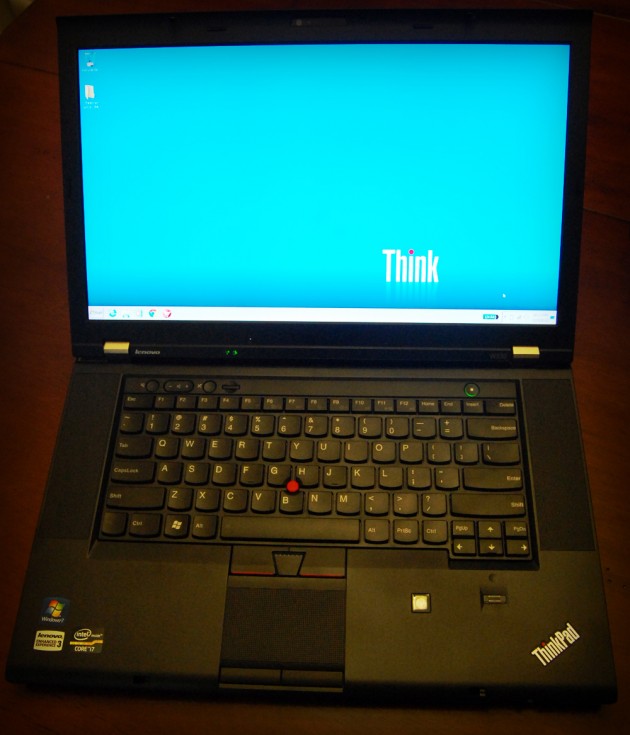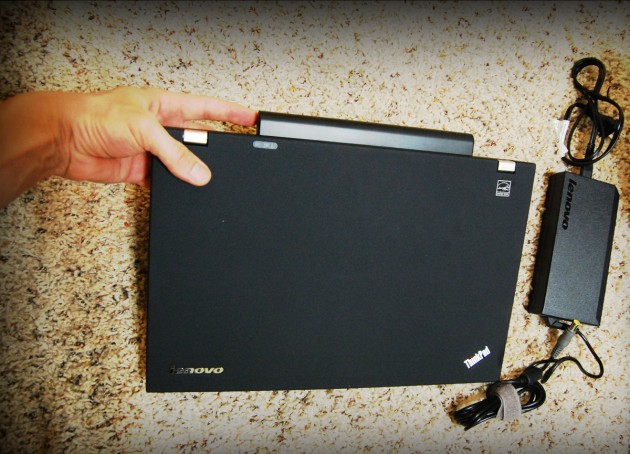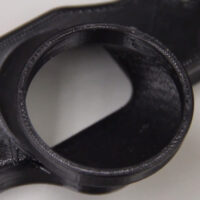Next week, we’ll be giving away a Lenovo W530 mobile workstation in the ‘Make your Lasercut Toy’ design challenge. There are a few days left to enter, so be sure to submit your entry soon!
I’m sure you have the picture of the perfect mobile workstation in your wallet–or perhaps displayed decoratively as a collage on your wall–that you show to people who appreciate such things. The search for mobile workstation perfection continues at SolidSmack and this week we look at the Lenovo Thinkpad W530, a laptop that looks like a common chunk of black laptop you would hide away in a shoulder bag, but a laptop with a few words to say about design and performance.

Lenovo Thinkpad W530 Quick look
Like most workstations, you have options to customize the Thinkpad W530, adding on features till your heart clenches in shock of the price. Your options start at a reasonable $1,199. That price gives you a very decent Core i7(3610QM), 8GB system with a 2GB Quadro (K1000M) GPU and 320GB hard drive running Windows 7 or 8. All models and options can be seen here.
Lenovo hooked us up with this test unit that sits at the $2500 price point and comes packed with a Core i7(3920XM), 16GB with a 2GB Quadro (K2000M) GPU and a 500GB (7200rpm) hard drive running Windows 7. The standard screen for the W530 is a 15.6″ 1920×1080 TFT LCD display, anti-glare of course. Full specs are here.
W530 Highlights
There’s a lot to say about a laptop that doesn’t hurt when you use it. We’ll talk design aspects in a moment, but the first thing I noticed about this laptop is that I could carry it, with the screen open, whilst also carrying a three month old baby. Perhaps not the safest thing to do, but at 5.95 lbs, the weight difference between the baby and the laptop is quite noticeable. Now, here’s the bucket list of my top observations about the Thinkpad W530.
Battery
The specs boast a 20 hour life. That’s probably if it’s just sitting there. You’ll get a good 6 hours though, long enough to be mobile between long work sessions at a coffee shop or while watching a movie on the couch. The battery does, however, stick out the back a good 1.5 inches, which surprisingly, makes a great handle for using the laptop to swat away hipsters crowding your table at the coffee shop. (Note: Using it is a handle to swat people is not recommended by the manufacturer.)
Keyboard
One of the first keys I look for is PrtSc. Some laptops hide it up top or in a Function key combo. Joy of joys that Lenovo put PrtSc down by the Spacebar, just to the right of Alt. The Home, End, Insert and Delete keys are in their common places to the upper right. There isn’t a numeric pad, but you’ve got up, down, left, right, PgUp and PgDn to the lower right. Horror and left pinky spasms occurred when I noticed the Ctrl-key, not in it’s proper place in the outermost lower left corner, but inset, next to the Fn-key.
Spotlight
The keyboard isn’t backlit, but when you hit Fn-Spacebar you get a handy little spotlight that illuminates your 30-80wpm typing. Unlike backlit keyboards, it can also be used to make shadow puppets or view classified documents in the dark. My thought was that it would interfere with the webcam positioned next to it, but low and behold, it does not.
Ports
These are often deal breakers for me. Best CPU and graphics? Who cares! (I do.) Just line the edges with USB ports. Lenovo doesn’t go that far, but they have packed in five USB ports, a Mini DisplayPort, a Multicard reader, a VGA port, audio and network port. They put some thought into the location too. There are no ports on the front edge. The power plugs is on the back left and has a nice, tight fit with a click when it’s in–not the experience with other laptops. A USB port is on the back right is perfect location for a USB mouse receiver. The audio port location on the front right, next to where your mouse/hand goes, could be in a better spot, but besides that, it’s well outfitted with ports.
Design
Big props to the design team. While it’s a lot of hardware packed into a chunky black exterior, they put thought and lessons learned into all of it. The front edge where your arms rest has a soft rolled edge. Instead of a speaker on the back or bottom of the laptop, a speaker is located on each side of the keyboard. The screen opens a full 180 degrees to lay flat. Why this is necessary, I have yet to discover, but it’s fun to stare at people till they look at you, then open it sloooowly, all the way, while maintaining a look of superiority. The hinges are solid and the whole computer feels solid, albeit a bit plasticy with some noticeable flexing on the screen bezel.
W530 Benchmark
I use the following to benchmarks because they’re easy, freely available, have a lot of comparative data against them and they’re probably not slanted in performance toward one hardware setup or another.
SolidWorks Punch holder benchmark
Punch holder results: 54.54 seconds (Total rebuild time)
You can get this benchmark here. This score is the time it takes for the punch holder model to rebuild. The top 30 computers (including laptops) hit scores under 60 seconds, the fastest rebuilding at 40 seconds. While it seems like a long time to rebuild a single part, it’s quite complex, so 54 seconds represents a great rebuild time for this laptop and the perfect amount of time to go reheat your coffee.
Passmark Benchmark
Passmark rating: 2305.5 (Full results)
You can get this benchmark here. This score is determined relative to other computers running the same tests. If you don’t have a lot of computers, it’s a great resource. The higher the number the faster the computer. The top 20 computers (including laptops) hit scores over 5900, which means they’re over twice as fast as this laptop. Now, to get the best performance grade, you need to compare similar systems. Comparing with similar systems here, this laptop sits in the middle with high marks received for CPU and Memory and low marks received for hard drive performance. If transfer speeds are a concern, going with a RAID setup (free option) or SSD drive over the standard 320GB or 500GB 7200RPM option is going to be the best way to go.
Conclusion
I’m sure somebody, somewhere has images of the Lenovo W530 up on their wall. If that’s you… well first, I’m slightly concerned, but you likely appreciate what we found to be a mobile workstation that combines the best of size, strength and usability–5.95 lbs, a 15.6″ screen and Core i7 with 16GB RAM and a NVIDIA Quadro K1000M GPU. Having used 17″ screens on laptops and multiple 28″+ screens for desktop, the 15″ screen does feel small, but it’s so light and manageable, it makes working on the go much more enjoyable. It’s nice to have options when looking for a suitable workstation with enough power to crank your CAD. With a starting price at $1,199, this is definitely one to keep on the short list with the recommendation of upgrading hard drive and maxing out on memory to get the best performance.
What are your top options for CAD workstations? Memory and a high performance drives are nice, but what’s at the top of your list of upgrades to get the best performance?

![The Lenovo Thinkpad W530 [Review]](https://www.solidsmack.com/wp-content/uploads/2012/11/lenovo-thinkpad-w530.jpg)







